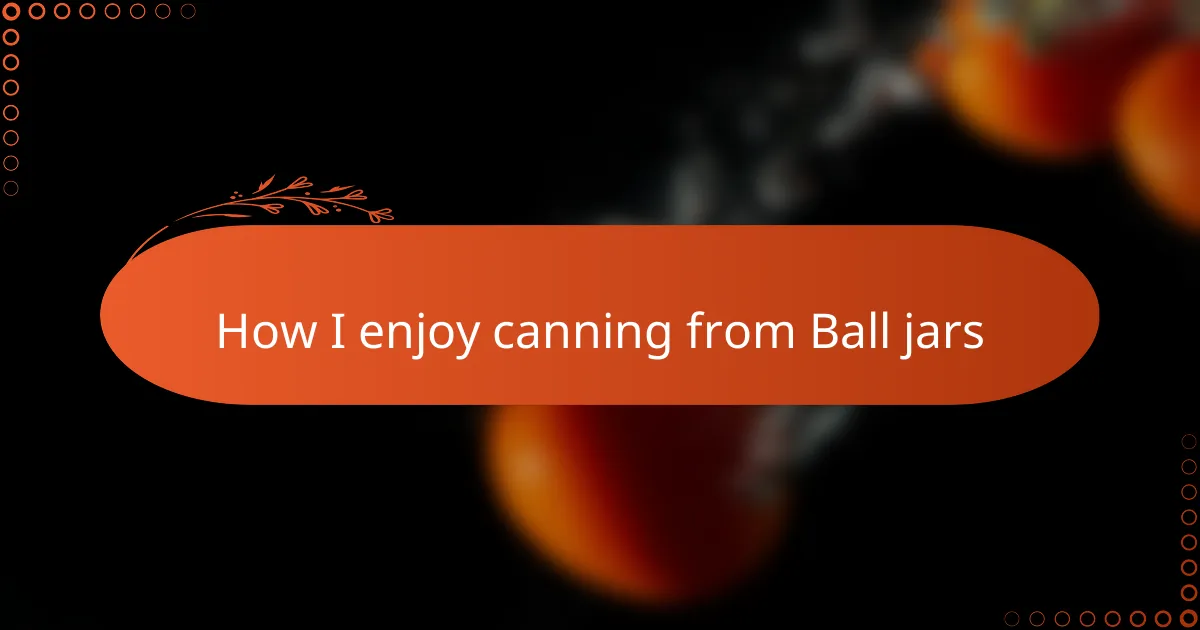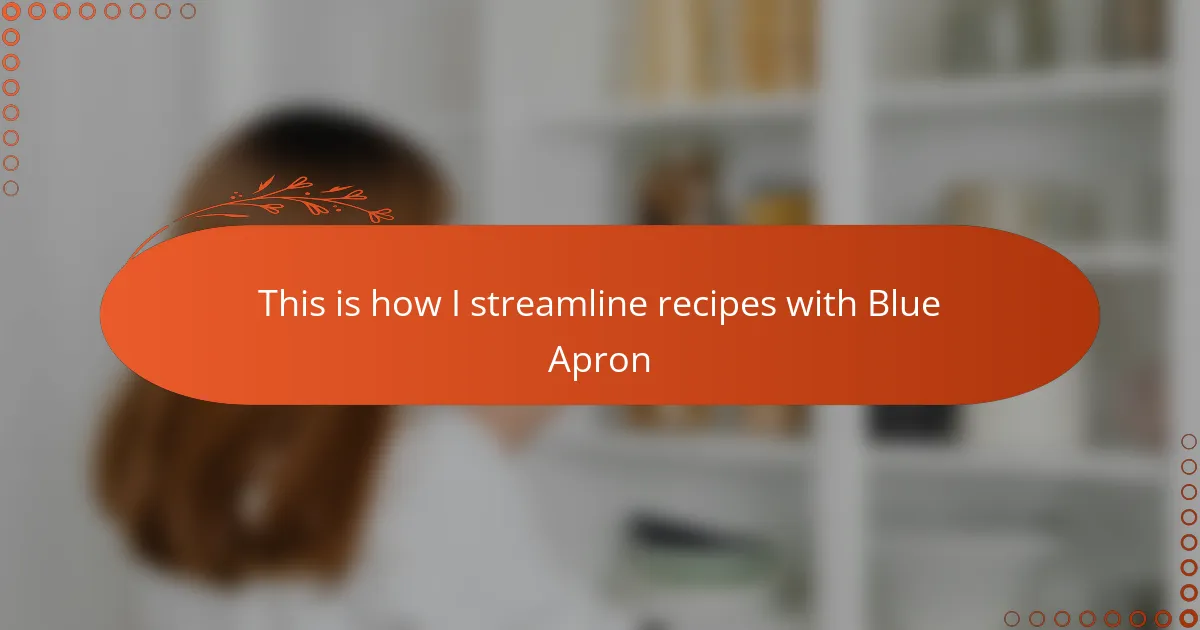Key takeaways
- Ball jars are essential for safe canning, offering airtight seals and various sizes for preserving different foods.
- Proper preparation and attention to detail, such as timing and sterilization, are crucial for successful canning outcomes.
- Key tools like a canning pot, jar lifter, and bubble remover enhance the safety and efficiency of the canning process.
- Canning provides a rewarding experience, fostering a deeper connection to seasonal ingredients and mindful cooking practices.
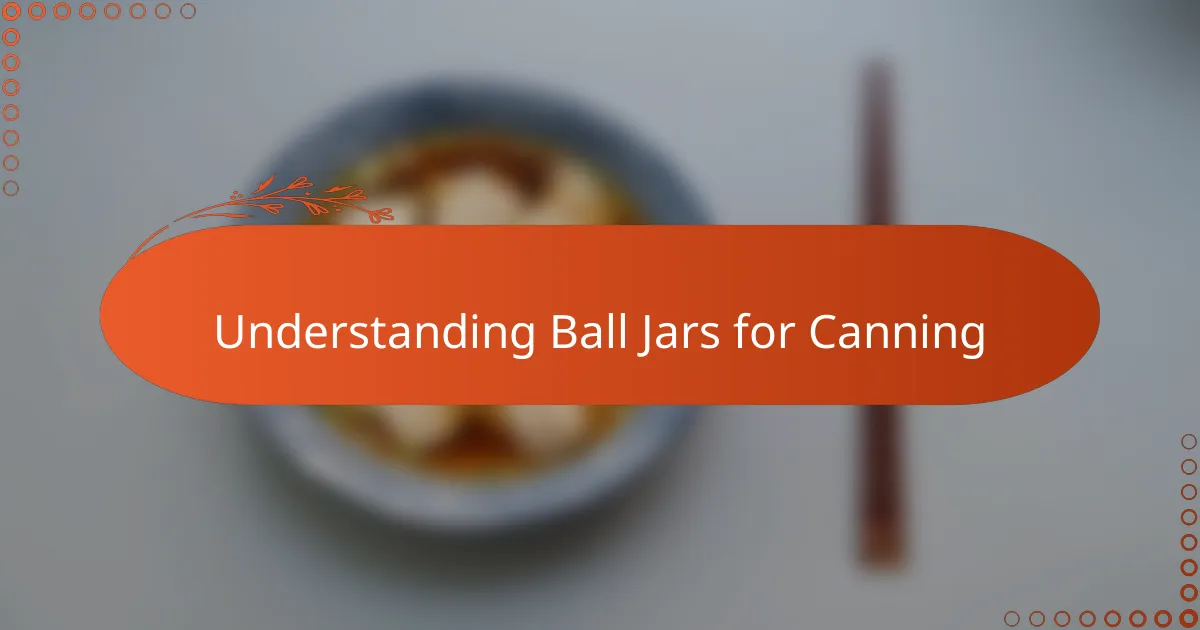
Understanding Ball Jars for Canning
When I first started canning, Ball jars felt like just another piece of kitchenware, but I quickly realized they’re the unsung heroes of homemade preservation. Their sturdy glass and airtight seals have a way of turning fresh produce into lasting memories. Have you ever opened a jar and been instantly transported to the moment you prepared its contents? That’s the magic Ball jars bring to the table.
I appreciate how these jars come in a variety of sizes, which lets me customize my batches depending on whether I’m preserving spicy salsa or sweet strawberry jam. The two-piece lid system always gave me confidence, knowing there’s a reliable seal keeping my goods safe from spoilage. It’s a small detail, but it makes all the difference for a canning newbie like me.
Understanding the importance of using genuine Ball jars is crucial because not every jar guarantees the safety and success of your preserved foods. I remember once trying to repurpose old jars and ended up with a wonky seal that almost ruined my entire batch—lesson learned! Knowing the role these jars play gives canning that sense of trust and satisfaction I cherish.
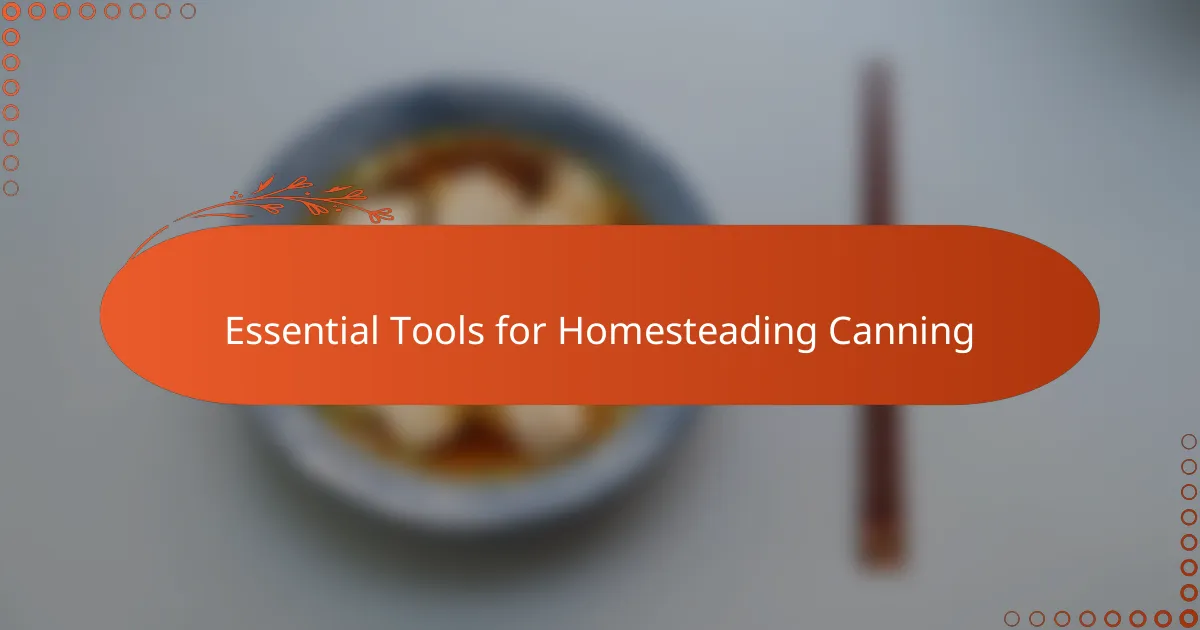
Essential Tools for Homesteading Canning
One tool I never skip is a quality canning pot with a rack. It’s more than just a big pot—it’s the foundation for safely processing my jars. Without it, I wouldn’t have the confidence that each jar is heated evenly and sealed properly, which makes all the difference between a tasty batch and a wasted effort.
I also swear by my sturdy jar lifter. Early on, I learned the hard way that trying to fish hot jars out with regular tongs or spoons is a recipe for disaster. Have you ever spilled your precious preserves because you lacked the right grip? That’s a stress I avoid completely now with the lifter’s secure hold and peace of mind.
And of course, I can’t overlook the simple but vital bubble remover and headspace tool. It sounds minor, but smoothing out air bubbles and ensuring the right headspace keeps my homemade goods from spoiling. It’s those little steps that make me feel like an expert, turning raw ingredients into shelf-stable treasures.
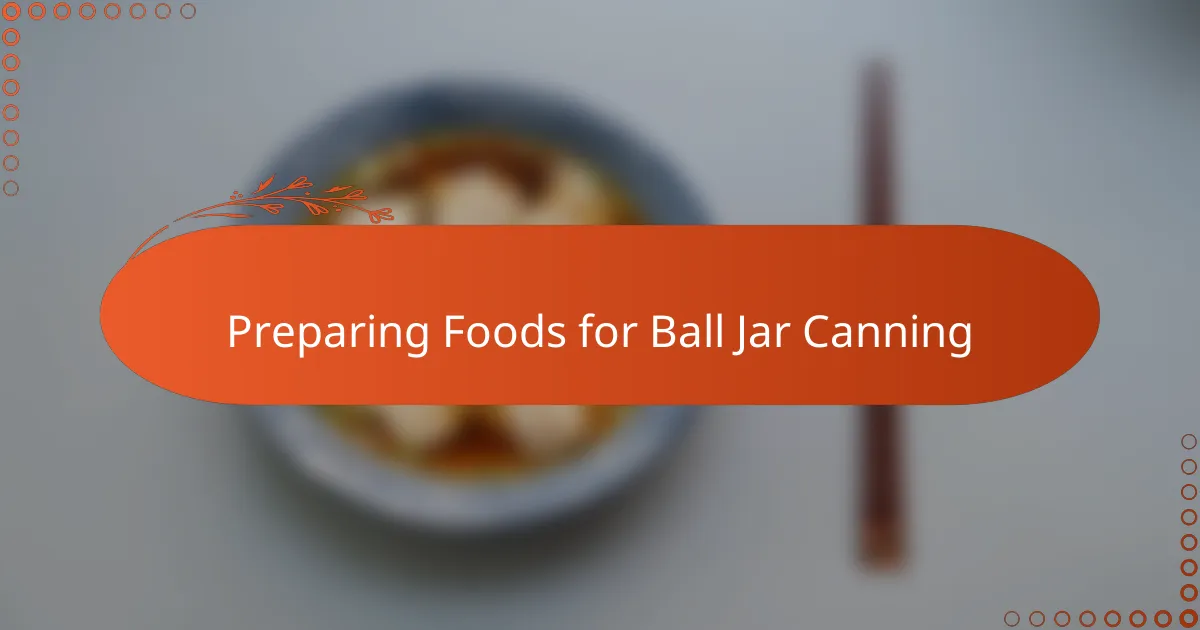
Preparing Foods for Ball Jar Canning
Getting my fresh fruits and vegetables ready for Ball jar canning always feels like the first real step in a fun kitchen adventure. I learned early on that washing everything thoroughly and removing any bruises or blemishes isn’t just about cleanliness—it’s about making sure my final jar is as delicious and safe as possible. Have you ever been disappointed by off-flavors or mushy textures? That’s usually because the prep wasn’t quite right.
Peeling, chopping, or blanching—these prep steps depend on what I’m canning, but none feel tedious when I remind myself they set the stage for preservation success. For example, when I make tomato sauce, blanching the tomatoes to remove skins gives me a smoother, more appealing result in the jar. It’s those small details that turn good produce into something truly special.
I also pay close attention to timing during prep since I’ve noticed that starting with overly ripe or under-ripe foods can affect both texture and taste after canning. Waiting for peak ripeness, even if it means a little patience, always rewards me with brighter flavors and better shelf life. Have you ever rushed the process and regretted it? I know I have, which is why I’m extra careful now.
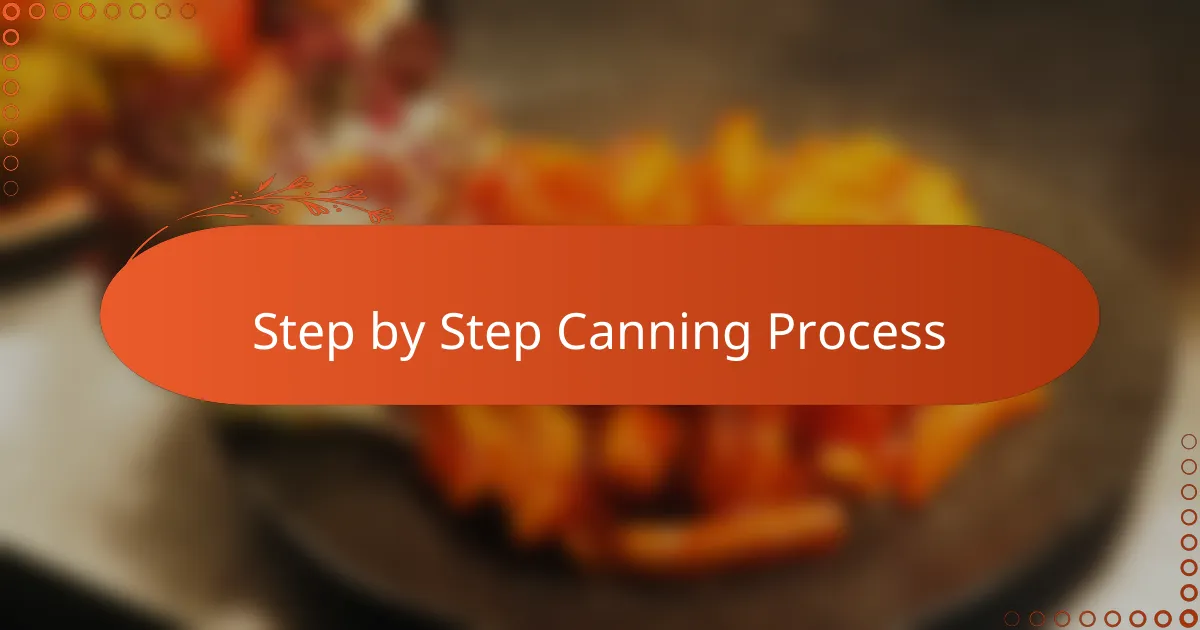
Step by Step Canning Process
There’s a certain rhythm I’ve come to love in the step-by-step canning process. First, I sterilize my Ball jars by boiling them, which always feels like setting the stage for something special. Have you ever noticed how taking that extra time to sanitize gives you a quiet confidence that your preserves will last?
Filling the jars can be surprisingly satisfying. As I spoon my carefully prepared fruits or vegetables into each jar, I pay close attention to the headspace—leaving just enough room so the contents can expand without escaping. It’s a small detail, but skipping it once taught me the hard way about jars that leaked or didn’t seal properly.
Finally, sealing and processing the jars in the canning pot is where the magic really happens. I lower each jar onto the rack, cover with water, and let the boiling do its work. Waiting for that satisfying “pop” of the lid is one of the most rewarding sounds—I know in that instant my homemade preserves have become something safe, stable, and ready to brighten many meals ahead.
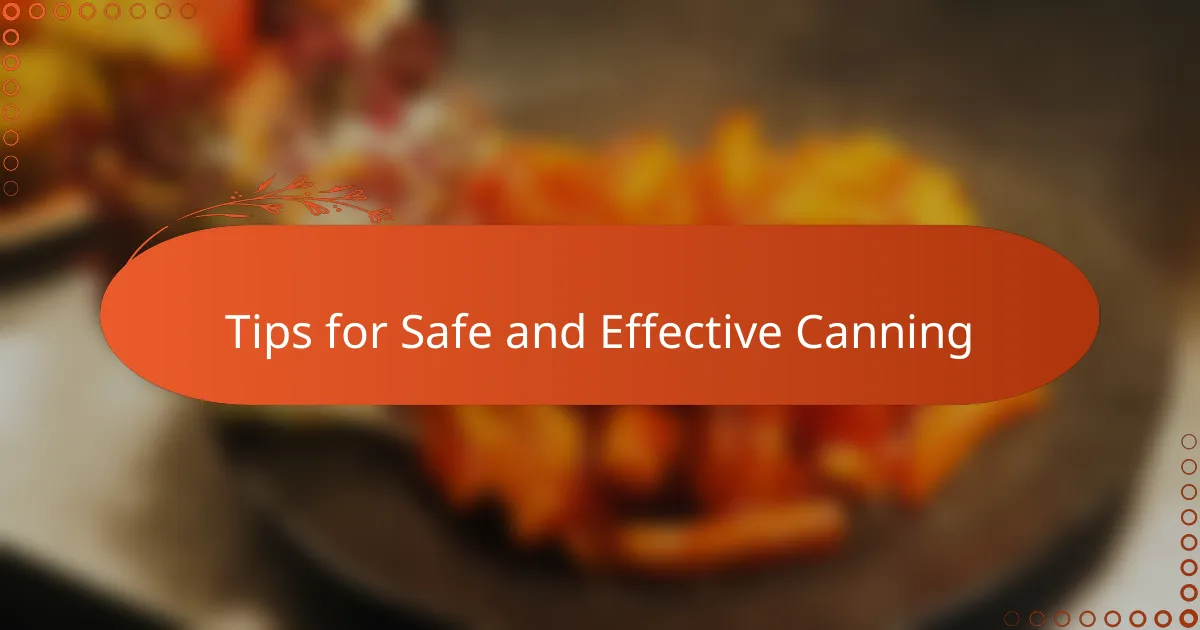
Tips for Safe and Effective Canning
One tip I’ve learned is never to rush the processing time. I remember one batch where I got distracted and took the jars out too early—sure enough, the seal wasn’t tight, and I wasted half my effort. Have you ever felt that sinking disappointment? It taught me the value of patience as the jars simmer, letting heat do its crucial work.
Another vital detail is checking your lids before sealing. Even a tiny bend or imperfection can cause leaks, which means spoilage. Over time, I’ve become a bit of a lid inspector, running my fingers along each one to make sure they’re perfect. It’s a little ritual that saves me from big headaches later.
Lastly, cooling jars properly is just as important. I always make sure they rest undisturbed on a towel in a draft-free area. Once, I tried to speed things up by moving them around too soon, and it caused cracked jars—an expensive lesson. Don’t underestimate the cooling phase; it’s where the perfect seal really sets in and guarantees your preserves stay safe and tasty.
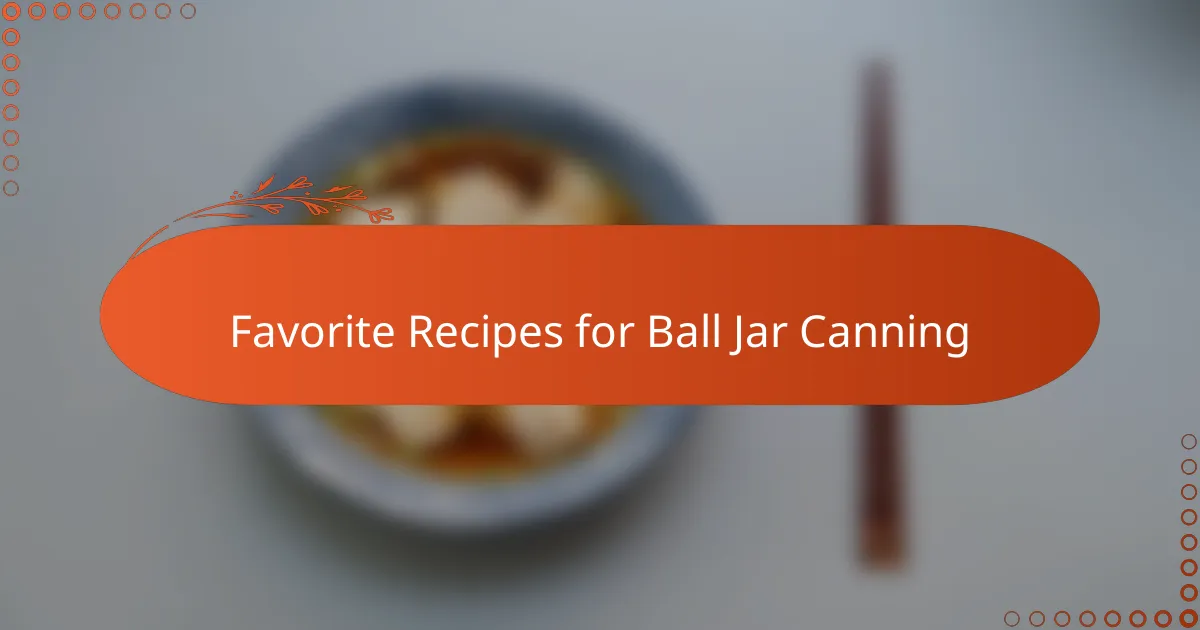
Favorite Recipes for Ball Jar Canning
When it comes to my favorite Ball jar canning recipes, nothing beats a classic homemade peach jam. There’s something deeply satisfying about capturing that summer sweetness in a jar to enjoy all year round. Have you ever tasted jam so fresh it instantly reminds you of sunny afternoons? That’s exactly what I strive for with each batch.
I also love making spicy pickled green beans. It started as a fun experiment, but the tangy kick and crisp texture quickly made it a staple in my pantry. Plus, canning these beans in Ball jars means I can pull out a jar anytime I need a zesty snack or a flavorful addition to a sandwich.
And let’s not forget tomato salsa—my go-to when tomatoes are at their peak. The blend of fresh tomatoes, onions, and spices sealed tightly in those trusty Ball jars makes for a salsa that’s both vibrant and shelf-stable. I’ve had friends sneak a jar just to taste, and honestly, that kind of appetite validation is one of the many joys of canning.

Personal Enjoyment and Benefits of Canning
There’s something deeply rewarding about the hands-on nature of canning that I didn’t expect when I first started. Watching raw ingredients transform into beautifully sealed Ball jars gives me a sense of accomplishment that’s hard to match. Have you ever experienced that quiet pride when you see a perfectly sealed jar lined up on your shelf? It’s like catching a glimpse of your hard work preserved in time.
Beyond the satisfaction, canning brings me a comforting connection to seasons and tradition. I love knowing that each jar holds flavors harvested at their peak—a kind of homemade gift that keeps on giving during cold winter months. It’s more than just food preservation; it feels like nurturing myself and my family through thoughtful, intentional cooking.
And honestly, canning slows down my hectic pace in a way nothing else does. The measured steps, the waiting for jars to seal—it all encourages patience and mindfulness. Isn’t that a rare and precious thing these days? For me, those moments transform canning from a chore into a joyful ritual I genuinely look forward to.
